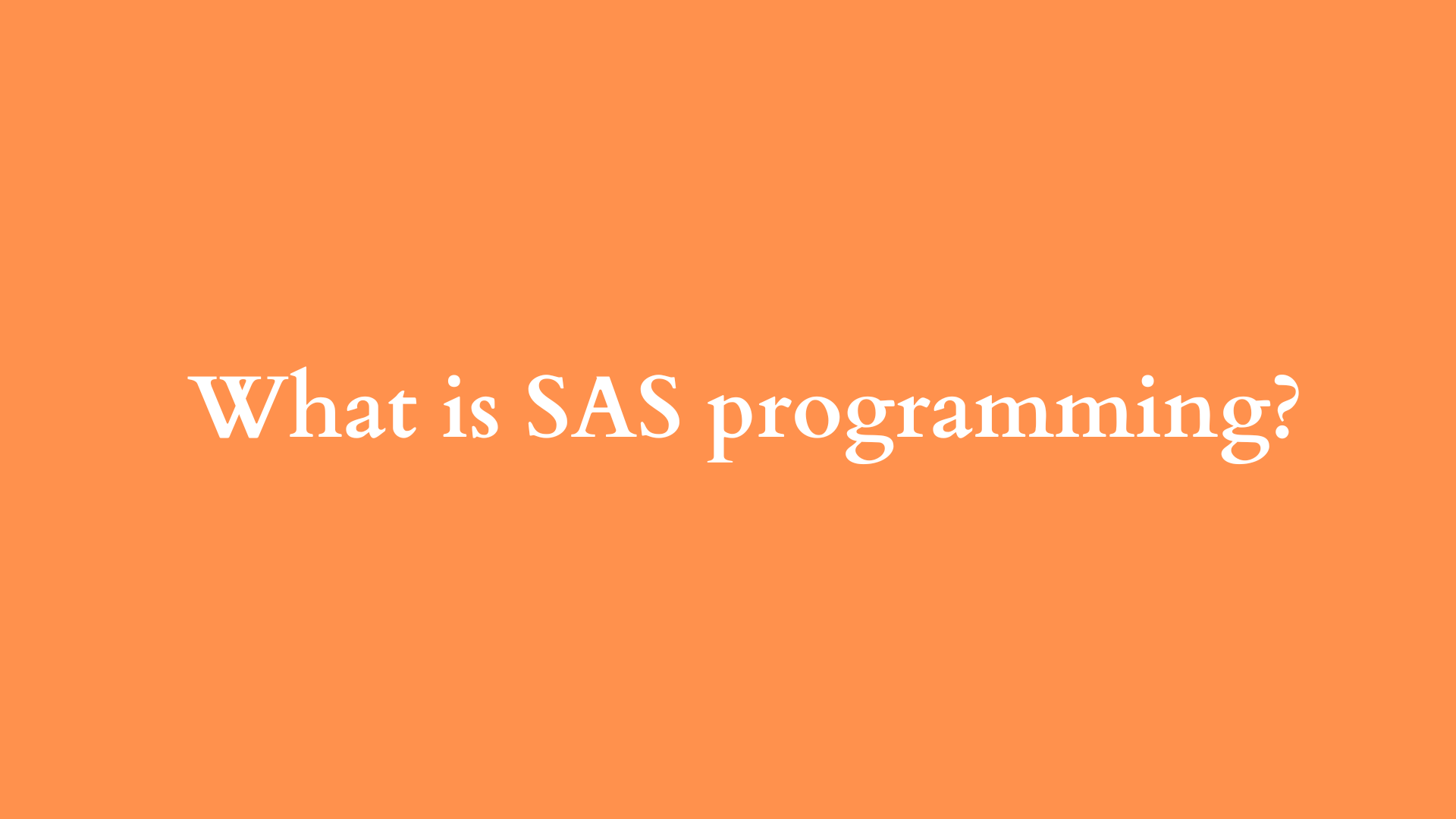Understanding SAS Programming: A Comprehensive Overview
In the realm of data analysis and statistical computing, SAS programming has emerged as a powerful tool widely utilized across various industries. This programming language, which stands for Statistical Analysis System, is particularly renowned for its ability to manage and analyze large datasets, making it invaluable to fields such as healthcare, business, finance, and academia. In this blog post, we will delve into what SAS programming encompasses, its history, applications, key components, and the skills required to become proficient in this essential tool.

Historical Context
SAS was initially developed in the late 1960s at North Carolina State University by Anthony James Barr, John Sall, and others, primarily to analyze agricultural data. Over the decades, it has evolved significantly, primarily driven by the increasing complexity and volume of data in various sectors. By the 1970s, SAS was being adopted by researchers and large corporations, leading to the establishment of SAS Institute Inc. in 1976. Today, it stands as one of the foremost software solutions for data analytics and business intelligence globally.
Core Components of SAS
SAS programming comprises several key components that facilitate various tasks related to data manipulation, statistical analysis, and reporting:
- Data Step: This is a fundamental building block of SAS programming used for data manipulation and transformation. The DATA step allows users to read data into SAS, clean it, and prepare it for analysis. It can also create new datasets from existing ones.
- PROC Step: Short for Procedure Step, PROC is used for data analysis and reporting. There are numerous predefined procedures in SAS, each tailored for specific statistical analyses, such as PROC MEANS for descriptive statistics or PROC REG for regression analysis.
- SAS Libraries: These are collections of datasets that SAS can access and manage. In essence, they serve as data containers that organize datasets logically, facilitating easier data retrieval and management.
- Macros: SAS allows for the creation of macros to automate repetitive tasks. Macros can help streamline code writing, making it more efficient and easier to manage across large datasets.
- ODS (Output Delivery System): ODS enables the output of results in various formats, including HTML, PDF, and Excel. This is crucial for generating professional reports and sharing outcomes with stakeholders effectively.
Applications of SAS Programming
SAS programming holds significance across a myriad of fields owing to its versatility. Some notable applications include:
- Healthcare: In clinical trials and epidemiological studies, SAS is widely used for analyzing patient data, monitoring trial progress, and ensuring regulatory compliance. Its robust statistical capabilities make it a preferred choice for researchers in the medical field.
- Finance: Financial organizations utilize SAS for risk assessment, fraud detection, auditing, and financial forecasting. SAS’s advanced analytics and reporting capabilities help businesses make informed decisions based on data-driven insights.
- Market Research: Companies often employ SAS to analyze consumer behavior, study market trends, and evaluate product performance. The statistical methods embedded within SAS facilitate the extraction of valuable insights from complex consumer data.
- Public Sector: Government agencies leverage SAS for various purposes, including census data analysis, budget forecasting, and poverty analysis. The ability to handle large data volumes efficiently makes it particularly advantageous in the public sector.
- Education: Academic institutions use SAS to teach students about statistics and data science, equipping them with vital analytical skills necessary for their future careers.
Getting Started with SAS Programming
To become proficient in SAS programming, aspiring data analysts and statisticians should consider the following essential skills and concepts:
- Familiarity with Data Structures: Understanding how data is structured and stored in SAS is critical. Basic concepts such as datasets, variables, and observations should be mastered.
- Statistical Knowledge: A solid foundation in statistics is necessary for interpreting the results generated by SAS. Familiarity with statistical methods, tests, and their applications will enhance the effectiveness of SAS programming.
- Programming Skills: While SAS has its own syntax, programming experience, particularly in data manipulation and analysis, will aid in writing efficient and effective code. Individuals should become comfortable with using functions, loops, and conditional statements.
- Attention to Detail: Data quality and integrity are paramount in any analytical endeavor. Consequently, SAS programmers must possess strong analytical skills to identify discrepancies, outliers, and errors in datasets.
- Problem-Solving Skills: Data analysis often involves solving complex problems. SAS programmers must be adept at approaching challenges analytically, leveraging SAS features to uncover insights and solutions.
- Experience with Reporting Tools: Given that sharing analytical results is integral to effective communication in any organization, familiarity with SAS reporting tools and visualization techniques will prove beneficial.
Conclusion
SAS programming offers a wealth of opportunities for data analysis, making it an essential skill in today’s data-driven world. Its robust toolset enables users to effectively handle, analyze, and report on large datasets across diverse sectors. As industries continue to evolve and rely increasingly on data to drive strategic decisions, SAS programming skills will remain invaluable.
Whether you are a student aspiring to enter the field of data analytics or a professional seeking to enhance your capabilities, mastering SAS programming can open doors to a multitude of career paths. With a blend of programming skills, statistical knowledge, and analytical thinking, you can leverage SAS to unlock powerful insights from data and add significant value to your organization.
Shop Now






